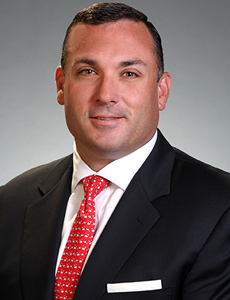Technology
Be Wary of ‘Bear Raiders’

Allegations of lax cyber security were responsible for driving down the stock price of a major medical device-maker last summer, even though data was not accessed.
It is yet another cyber risk that companies need to be wary of.
And even though the device-maker’s vulnerability may have been merely rumor-mongering in an attempt to drive down the stock price, it is a reminder that insureds must work closely with their brokers to ensure there are no gaps between where traditional cyber cover ends, and where policies covering directors and officers (D&O), or errors and omissions (E&O) begin.
“Where business goes, the bad guys follow.” — Steve Bridges, senior vice president of cyber risk and E&O, JLT US Specialty
The case involved St. Jude Medical. It isn’t the only example of possibly short-selling a stock for profit, but it became a bellwether that got everyone’s attention.
The incident occurred when a cyber security operation called MedSec, in collaboration with a hedge fund called Muddy Waters, went public in August 2016 with allegations that pacemakers made by St. Jude Medical were vulnerable to hacking. The company’s stock declined, to the delight of short sellers.
Within weeks of the bear raid, St. Jude Medical sued MedSec and Muddy Waters for defamation.
“The complaint alleged that Muddy Waters sought financial gain ‘by publicly disseminating false and unsubstantiated information’ that frightened and misled patients,” according to the “National Law Review.”
St Jude also “took additional measures to assure patients that cyber security was a priority. In October, St. Jude Medical announced that it had formed a Cybersecurity Medical Advisory Board,” according to the “National Law Review.”
“Further, when the FDA announced that it had identified cyber security vulnerabilities, St. Jude Medical responded the same day with a statement and a software fix that had received the FDA’s stamp of approval.”
By the end of 2016, the Food and Drug Administration issued “final guidance on the post-market management of medical device cybersecurity,” according to a blog by Suzanne B. Schwartz, associate director for science and strategic partnerships at the FDA’s Center for Devices and Radiological Health.
“The best way to combat these threats is for manufacturers to consider cyber security throughout the total product lifecycle of a device,” Schwartz wrote.
“In other words, manufacturers should build in cyber security controls when they design and develop the device to assure proper device performance in the face of cyber threats, and then they should continuously monitor and address cyber security concerns once the device is on the market and being used by patients.”
With doctors and lawyers expressing consternation about the incident, underwriters are urging their insureds to be rigorous in the assessments of their own cyber security, and to take advantage of the capabilities that carriers have assembled for dealing with breaches.
“We have been talking to our clients a lot lately about the new reality of the economy having moved mostly online and relying on networks,” said Steve Bridges, senior vice president of cyber risk and E&O at JLT US Specialty.
“Where business goes, the bad guys follow. The instance of short-sellers profiting from accusations they have floated about a company’s vulnerability is just the online version of the rumors and allegations that have gone on in financial markets from the earliest days.”
There may be more of it now, or it may just be the same level of bear-raiding that just moves faster and wider over electronic media.
One pernicious new angle is a data breach where confidential information about business transactions are accessed, although data is not stolen or damaged.
“We know there have been instances where law firms have been hacked and information about pending deals or other confidential information has been used to trade on companies,” Bridges said. “
Even if it seems as if nothing was stolen or no damage was done, there is still a breach of confidentiality. But then you look at the actual loss, and it can be difficult to determine who was harmed.
“Network security is now a very important part of due diligence before mergers, acquisitions or divestitures,” said Bridges.
He said that a loss in such a situation might fall in a gap somewhere between a cyber policy and a more conventional D&O policy.
“There could also be a reputational risk, but there is not meaningful reputational coverage out there yet.”
In a case like St. Jude’s there does not seem to be a trigger for cyber coverage. “It was reputational,” said Robert Rosenzweig, national cyber risk practice leader at Risk Strategies Co.
“For a company to transfer that risk it would need proper wording in its D&O or a stand-alone reputational policy.”

James Sheehan, cyber risk practice leader, Integro Insurance Brokers
The St. Jude’s bear-raid “gives me pause,” said James Sheehan, cyber risk practice leader at Integro Insurance Brokers. “You would assume there was unauthorized access to the system. Was there exfiltration or manipulation of data?”
The bigger issue, according to Sheehan, is for the Securities & Exchange Commission.
“Was it insider trading, just at a different level? At the same time, insureds need to be thinking about all these threats. They need to be working with their brokers and carriers on how to value their virtual assets.”
In underwriting cyber coverage, two points of contention are the frequency of reporting and the treatment of prior acts. Insureds are disinclined to report frequent breaches, even though it is now widely understood that businesses are under constant attack.
“Noticing every possible attack doesn’t make sense for our clients or the insurers,” said Bridges. “We counsel clients to make decisions on reasonableness and materiality using our collective judgment as to the types of cyber incidents that should be reported.”
Coverage or exclusion of prior acts is a constant issue in cyber coverage. Big losses of data can be the result of trapdoors in the software put in place years prior to a hack being discovered.
“Historically cyber coverage was created out of errors and omissions coverage where retroactive dates made more sense,” said Bridges.
“The market now has adjusted to where you can get a year or two, maybe more.”
There is also the importance of appearance. “The challenge for business is the shift in optics from prevention to detection,” said Rosenzweig.
“Organizations are constantly aware of intrusions, and they struggle with disclosure, especially if there has been no exfiltration of sensitive information. A lot of companies have stumbled. There is a hassle of reporting and a risk of failure to report.”
Rosenzweig is magnanimous about prior acts. “There has been a lot of improvement in coverage,” he said. “As long as there is no misrepresentation of knowledge of prior acts, some insurers are giving full coverage. Others are at least giving a look back of a few years.
“The complication is that you often don’t know about prior access until you are into the forensics.
“It is especially important for first-time buyers, and also in negotiating about prior acts. I would fight for coverage if an owner really did not have knowledge.” &











